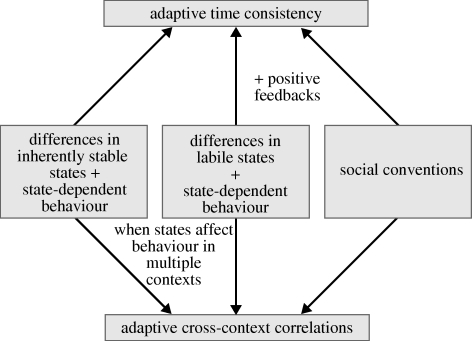Figure 1.
Explaining adaptive behavioural correlations. We consider three possible explanations for the evolution of behaviour that is consistent in time and correlated across contexts. The first is straightforward: when individual behaviour is dependent on states that are inherently stable (like sex or caste), the time consistency of state differences will be reflected in time-consistent behaviour; moreover cross-context correlations will result if the same state is of selective importance in different contexts. This explanation can be extended to potentially variable, labile states (like energy reserves, blood pressure or hormone levels) if positive feedbacks between state and behaviour induce time consistency in states. In the case of social interactions, consistent and correlated behaviour can evolve in the absence of state differences. Examples are social conventions (like winner–loser effects) or the coevolution of social responsiveness and behavioural consistency.

